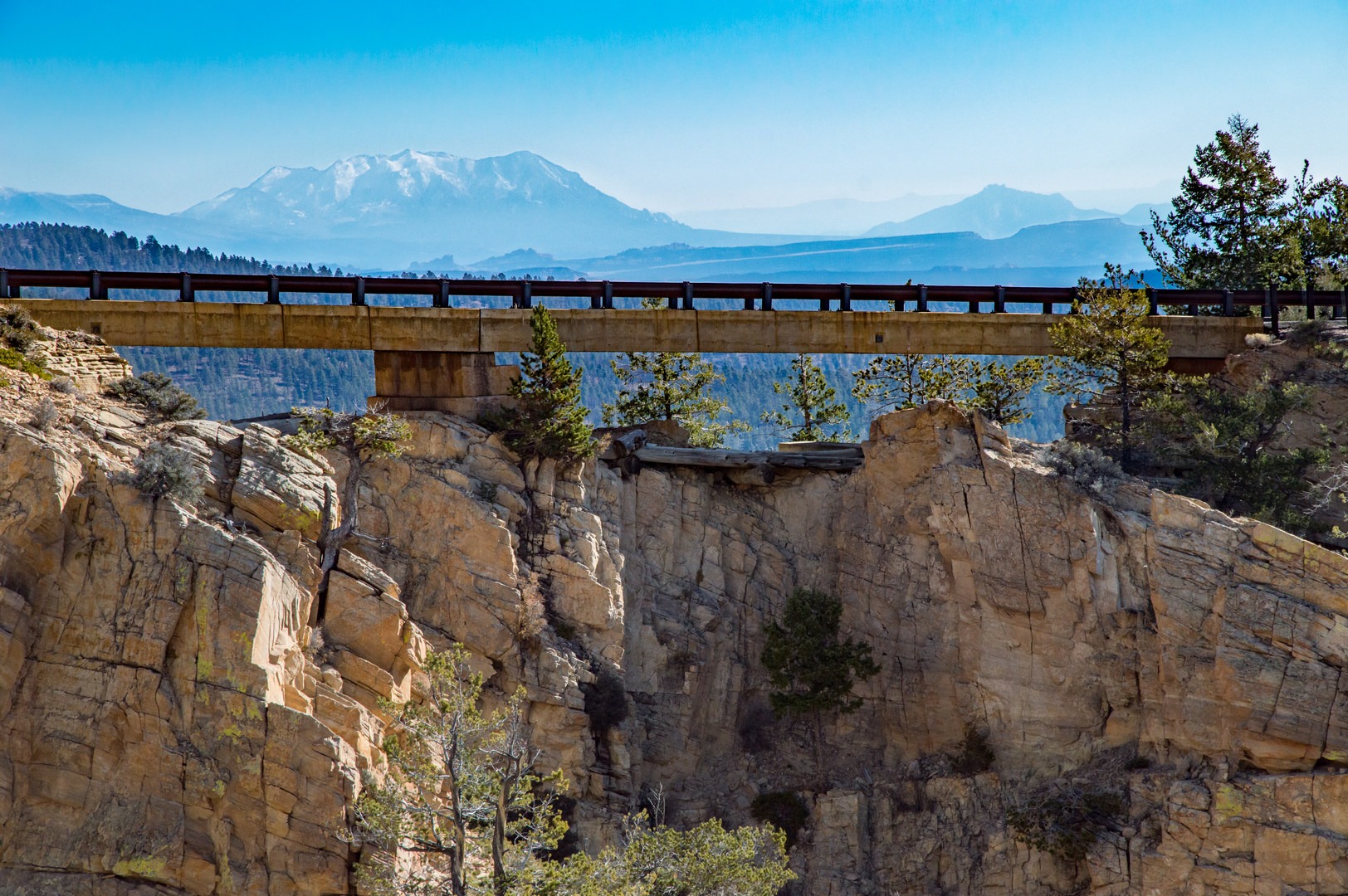You are here
This is a wild backway through the Escalante high country that is famous for its scenery and history. The highlight of the drive is a narrow bridge across a precipitous spine of rock called Hell's Backbone. The road was constructed by the Civilian Conservation Corps in 1933 as the first ever automobile route between the towns of Escalante and Boulder, Utah.
UT-12 was built in 1940 and is now the main transportation artery in the area. The drive across Escalante River canyon country is an experience all its own and is not to be missed, but Hell's Backbone offers a unique tour of the pine-forested highlands and huge views over the landscape. This 38-mile dirt road takes a longer route than the paved alternative, but the drive is a regional destination all its own. Some sources claim that this is a one-way road, but it can actually be driven just as well in either direction, starting from Escalante or Boulder.
Hell's Backbone Bridge is approximately the halfway point. At 8,850 feet in elevation, two large canyons drop dramatically away in opposite directions, leaving only a narrow span of rock between them. This is the Hell's Backbone. The Civilian Conservation Corps, in a display of bold engineering and daring tenacity, built a wooden bridge to take cars across this natural passageway.
The original bridge has since been replaced by modern concrete and steel, but you can still see remnants of wooden beams beneath the structure and beside the road. As you take in amazing views from this lofty landmark, take time to ponder the feat of ingenuity that happened nearly 100 years ago.
More than just a through drive, Hell's Backbone Road accesses many trails and campgrounds in Dixie National Forest and Box-Death Hollow Wilderness. If you have a full day, try pulling off the road and exploring a bit. If you want to spend the night, Posey Lake, Blue Spruce, or Cowpuncher are the maintained Forest Service campgrounds and are all near Escalante's end of the road. There are also a few side roads into the national forest that access dispersed camping spots in relative solitude among summer wildflowers.
Hell's Backbone is a route dependent on the seasons. Since the road's creation, it has closed during winter, hence the need for UT-12 in the low country. Though there is no set closing date, the road becomes impassable after the first major snowfall. When temperatures drop in late September and October (but before snow hits), aspen leaves change and swaths of mountainside turn gold. Snows at the highest elevations grant views of white-capped peaks on the distant Henrys or nearby Boulder Mountain.
Summer is when Hell's Backbone gets the most traffic, when all the mountains are as green as can be. This is a great time to escape the desert heat by climbing to higher elevations. In dry conditions, the road is appropriate for most passenger cars and small RVs, albeit pretty bumpy. If you are traveling between Bryce Canyon and Capitol Reef or otherwise passing through the area, don't miss the opportunity to cross Hell's Backbone and explore the Escalante high country.
Logistics + Planning
Current Weather: Powered by Dark Sky






























Comments
Sign In and share them.